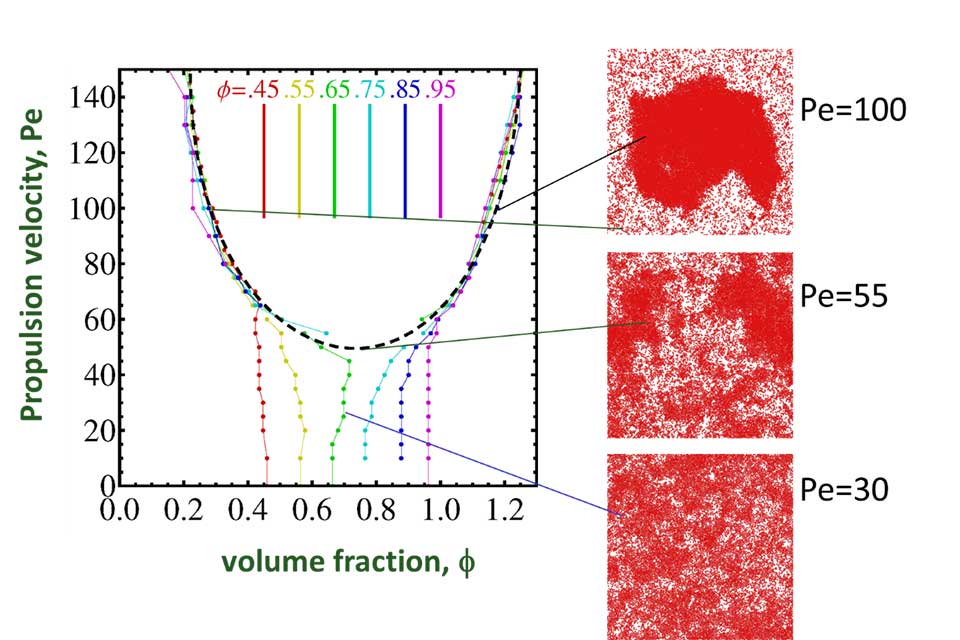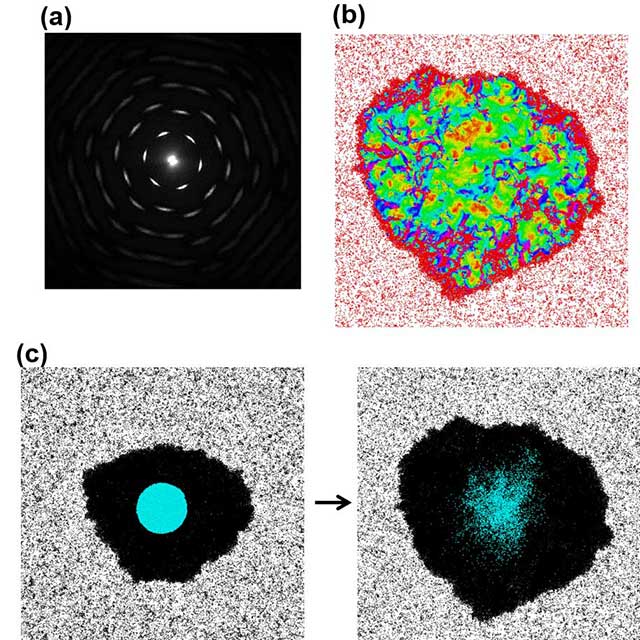Motility-Driven Phase Separation of Repulsive Self-Propelled Spheres in 2D
We examined a minimal model for an active colloidal fluid in the form of self-propelled Brownian hard spheres that interact purely through excluded volume. Using simulations and analytic modeling, we quantified the phase diagram and separation kinetics.
We found that this nonequilibrium active system undergoes an analog of an equilibrium continuous phase transition, with a binodal curve beneath which the system separates into dense and dilute phases, whose concentrations depend only on activity (Fig. 1). The dense phase is a unique material that we call an active solid, which exhibits the structural signatures of a crystalline solid near the crystal-hexatic transition point, and anomalous dynamics including superdiffusive motion on intermediate timescales (Fig. 2). This work was published in [1].
Motivated by recent experiments [2], we generalized the study to consider a system of self-propelled colloids that experience short-range attractive interactions and are confined to a surface [3]. In this case, we found that the phase behavior for such a system is reentrant as a function of activity: phase-separated states exist in both the low- and high-activity regimes, with a homogeneous active fluid in between. We developed a kinetic model for the system's steady-state dynamics, whose solution captures the main features of the phase behavior and reveals the physical mechanisms that give rise to reentrance. The simulated phase diagram can be directly tested against experiments on self-propelled particle with attractions.


References
- Redner, G.S., M.F. Hagan, and A. Baskaran, Structure and Dynamics of a Phase-Separating Active Colloidal Fluid. Phys. Rev. Lett., 2013. 110(5): 055701.
- Palacci, J., S. Sacanna, A.P. Steinberg, D.J. Pine, and P.M. Chaikin, Living Crystals of Light-Activated Colloidal Surfers. Science, 2013. 339(6122): 936-940.
- Redner, G.S., A. Baskaran, and M.F. Hagan, Reentrant Phase Behavior in Active Colloids with Attraction. Phys. Rev. E, 2013. 88: 012305.